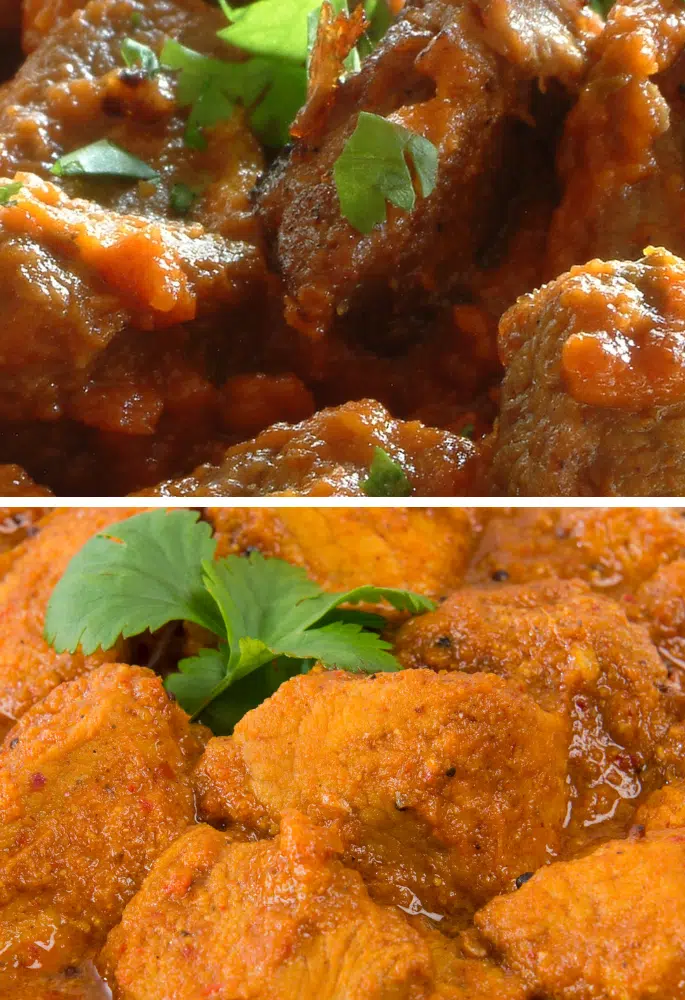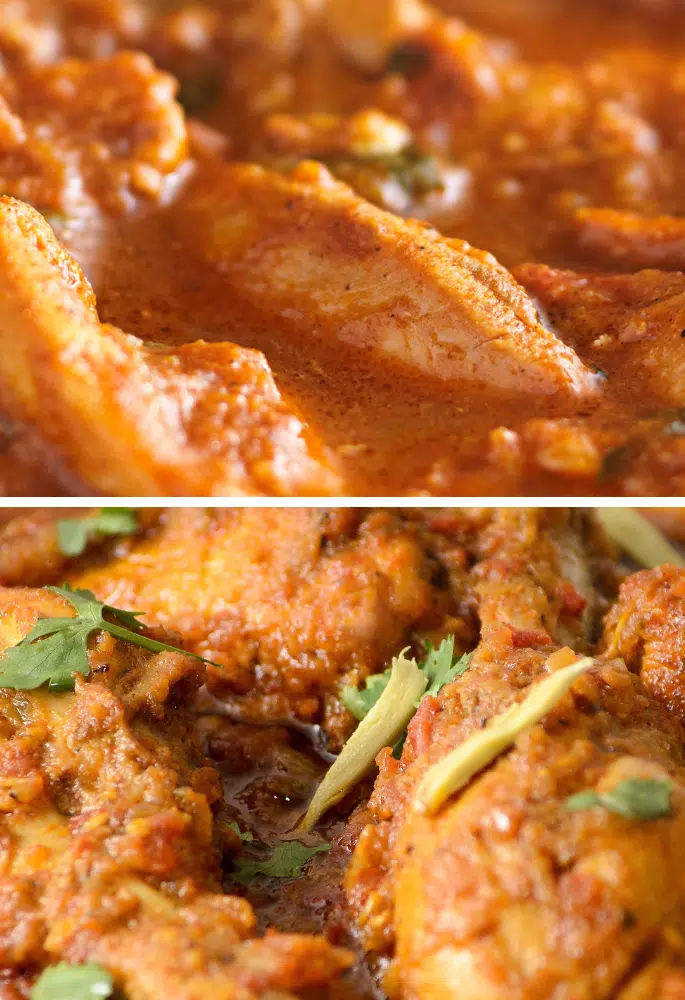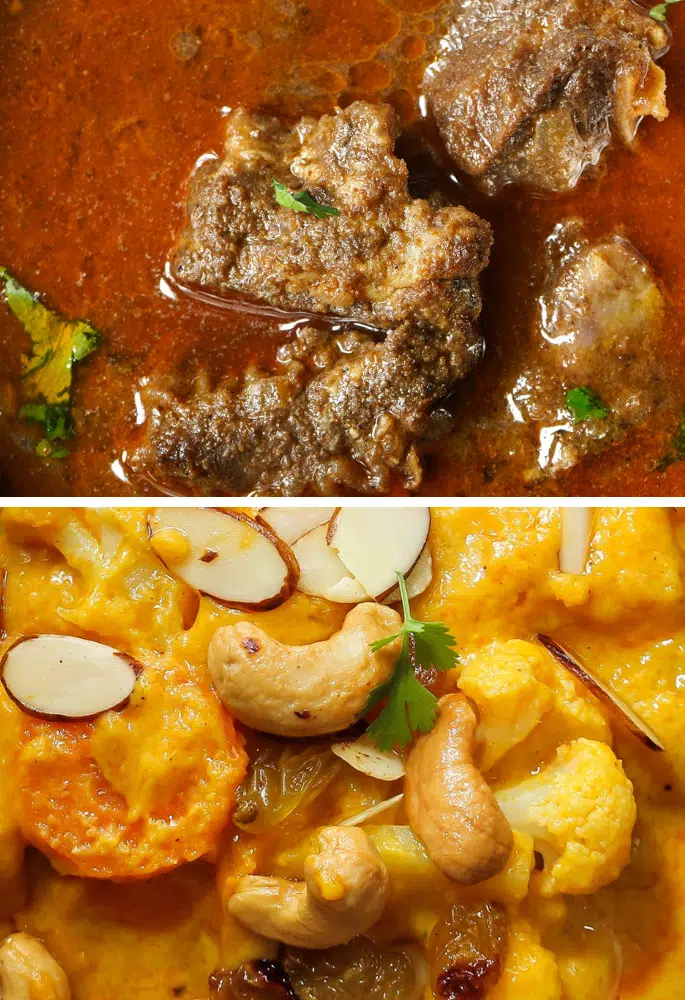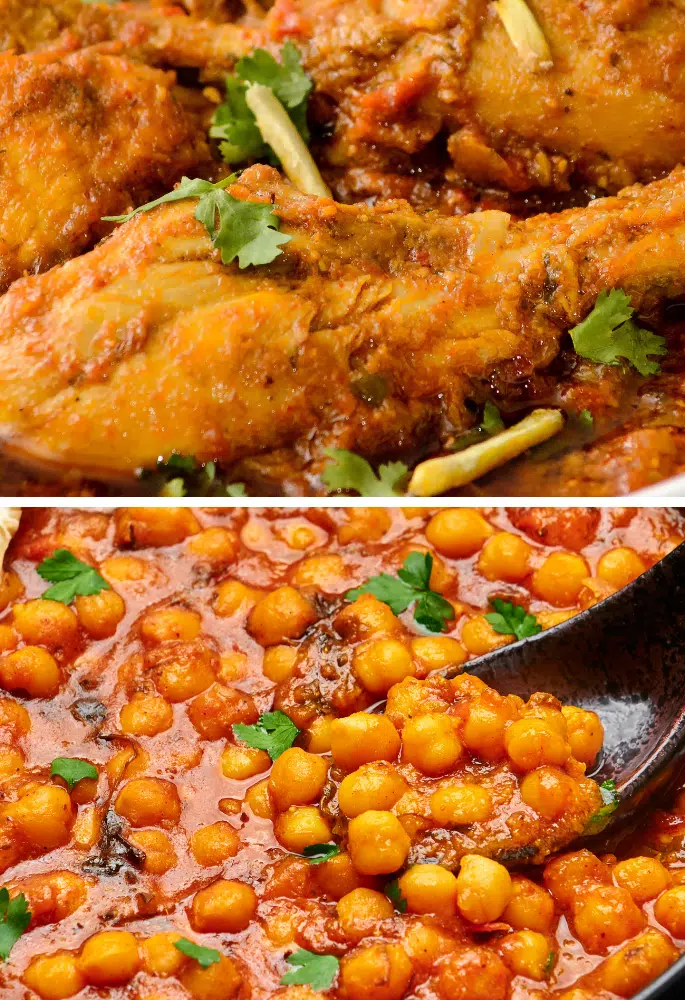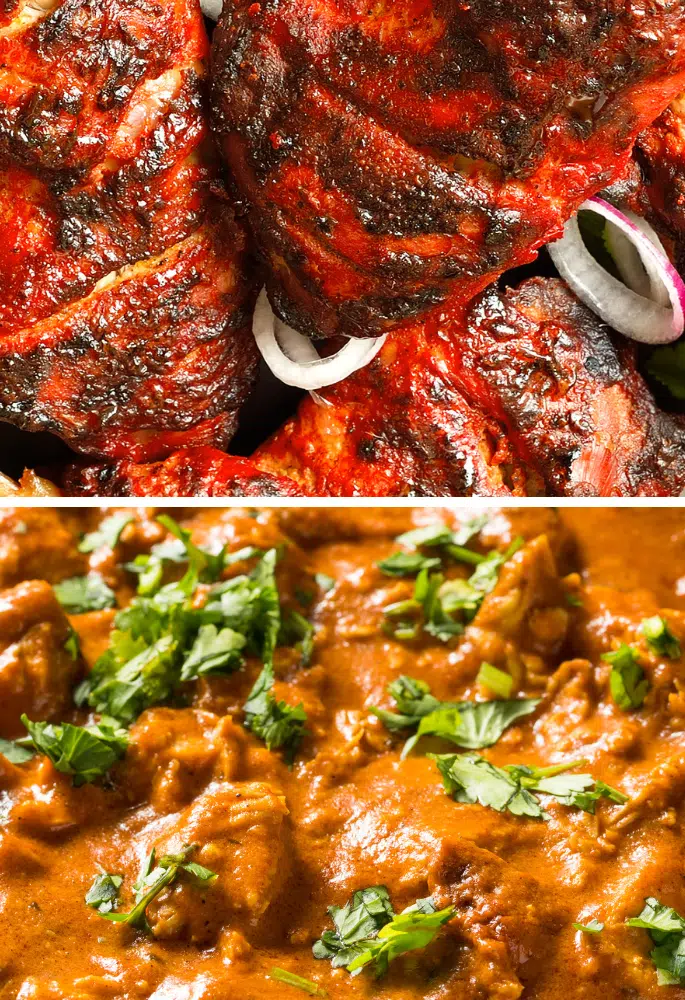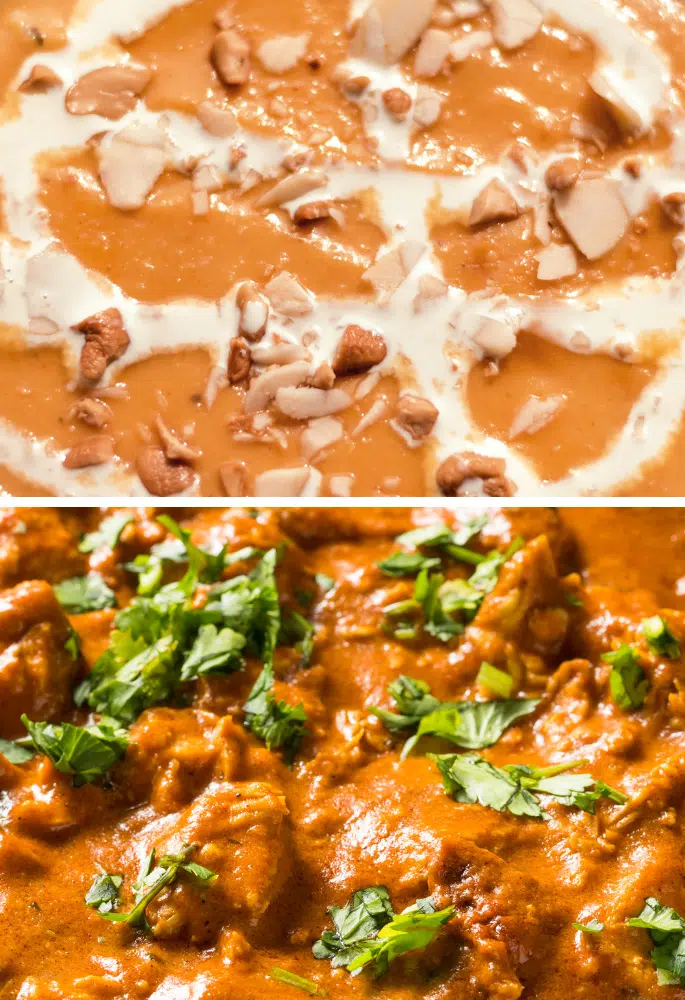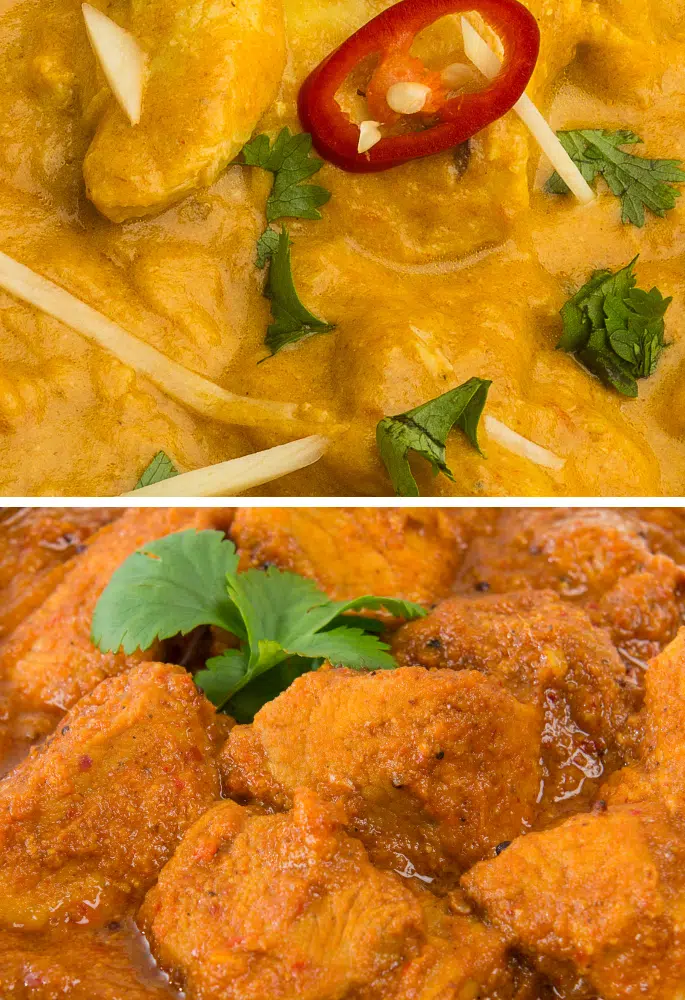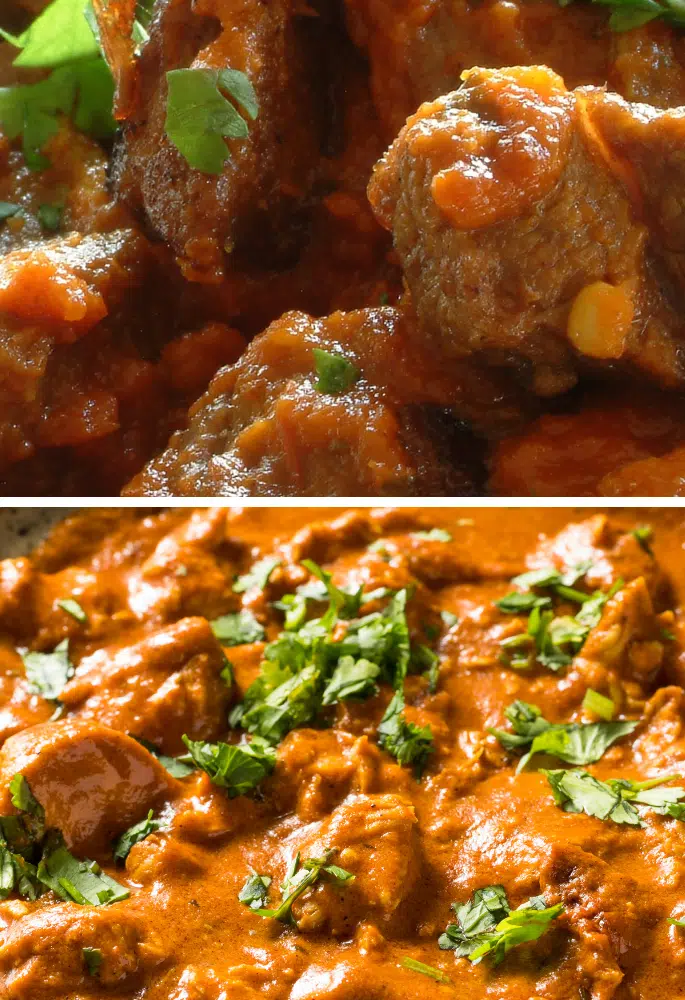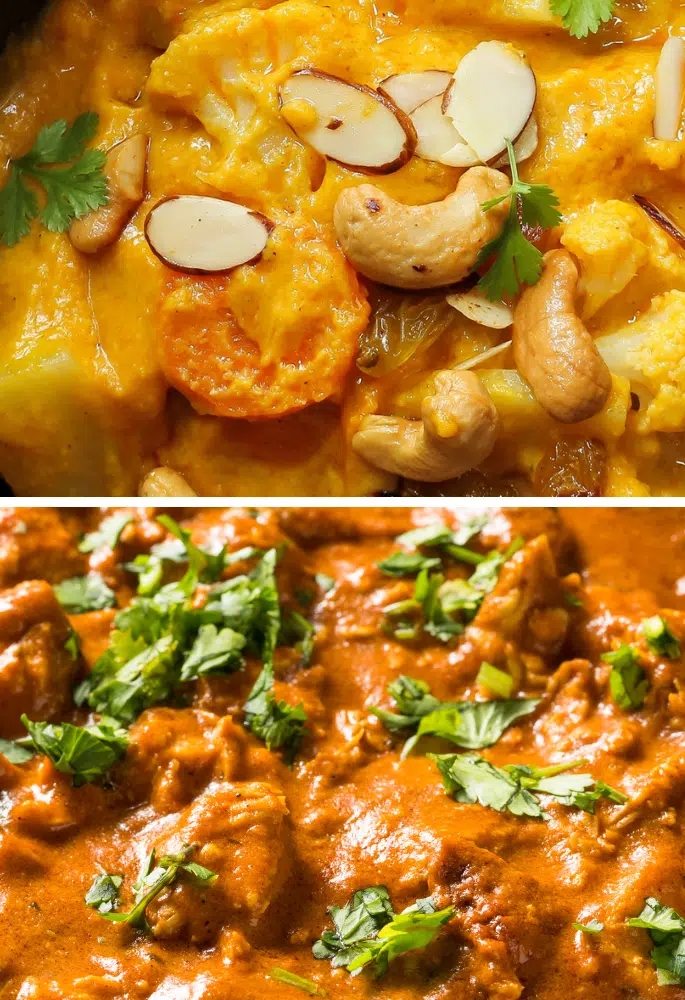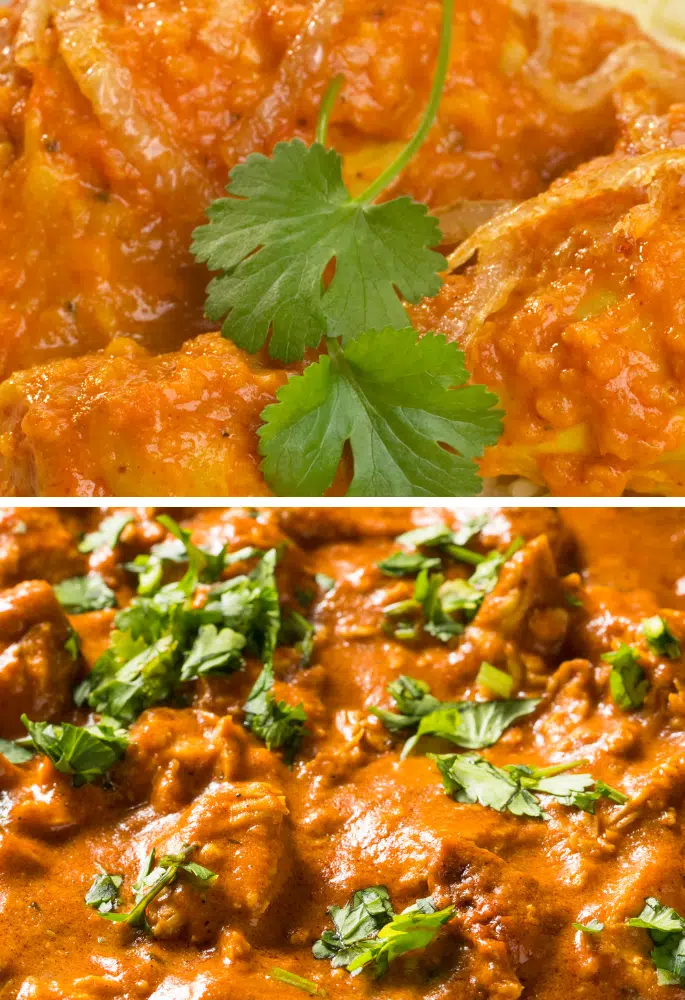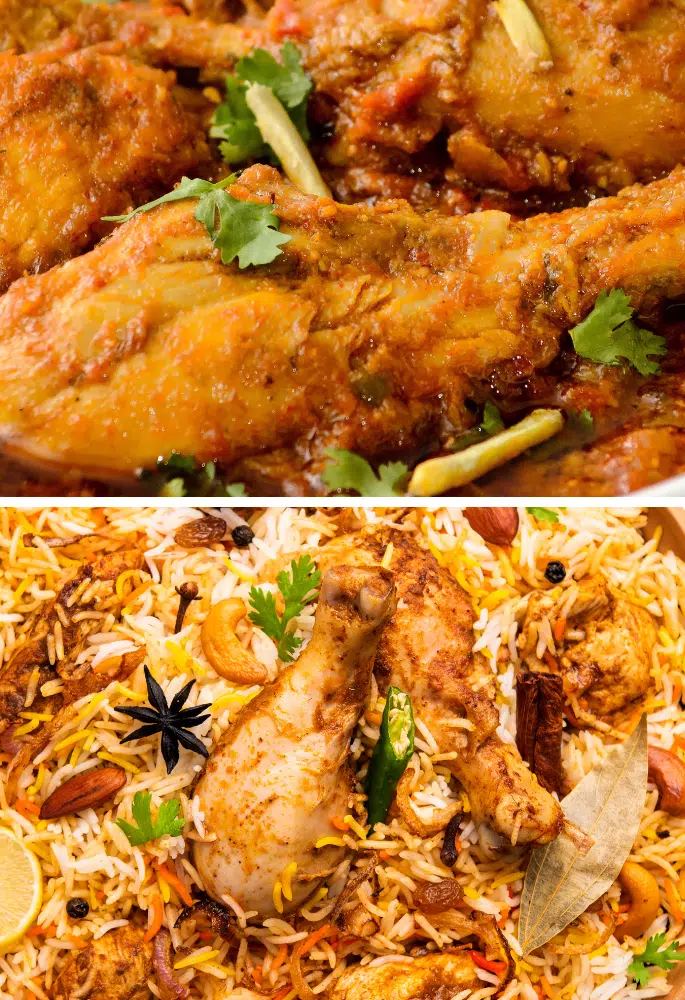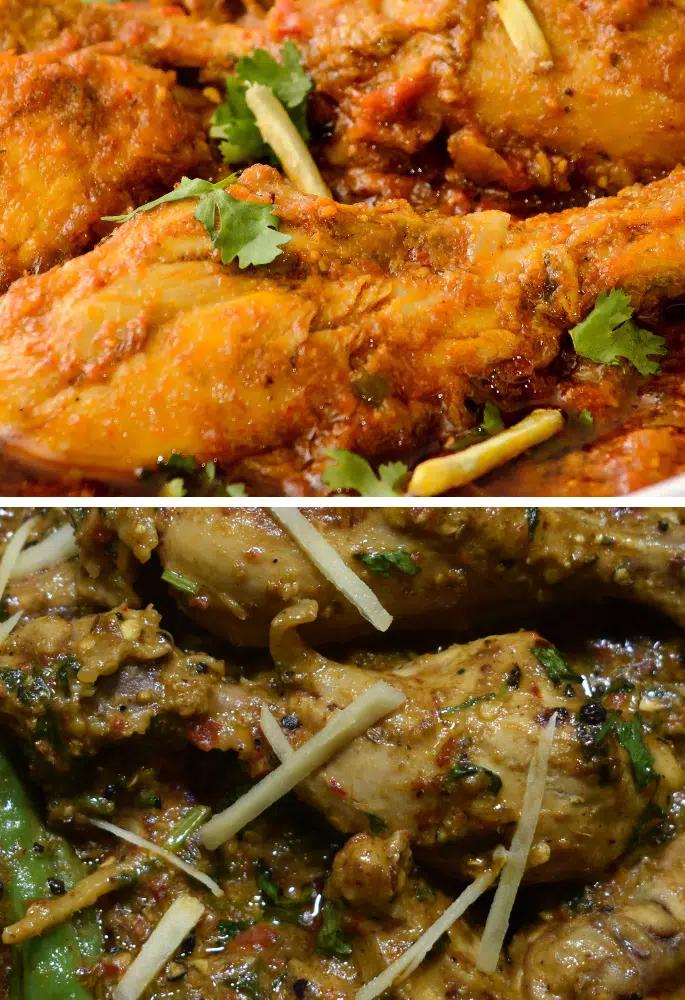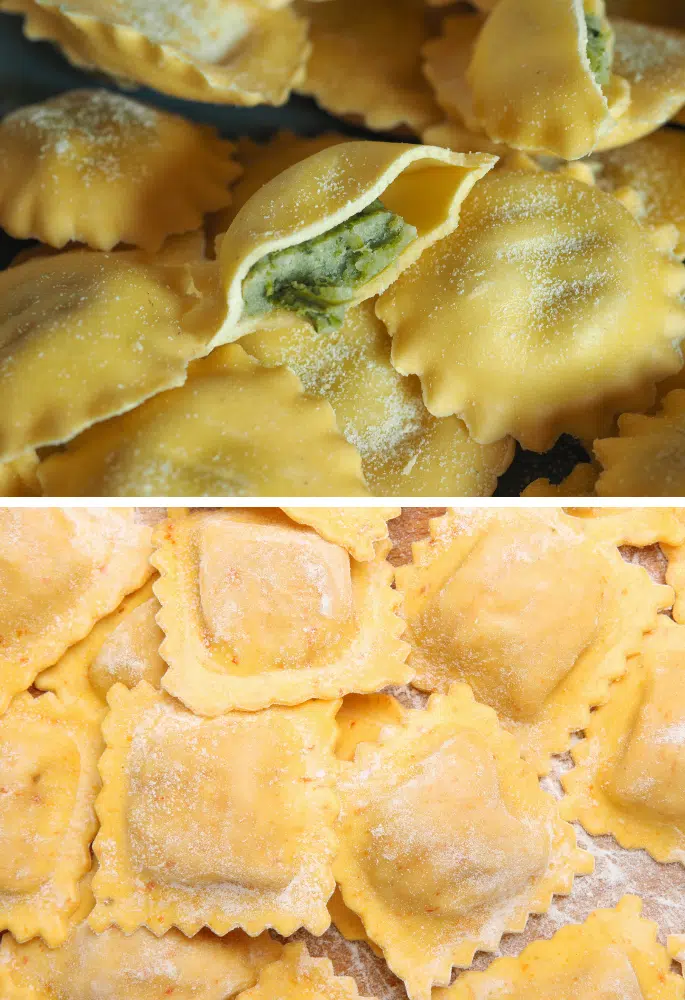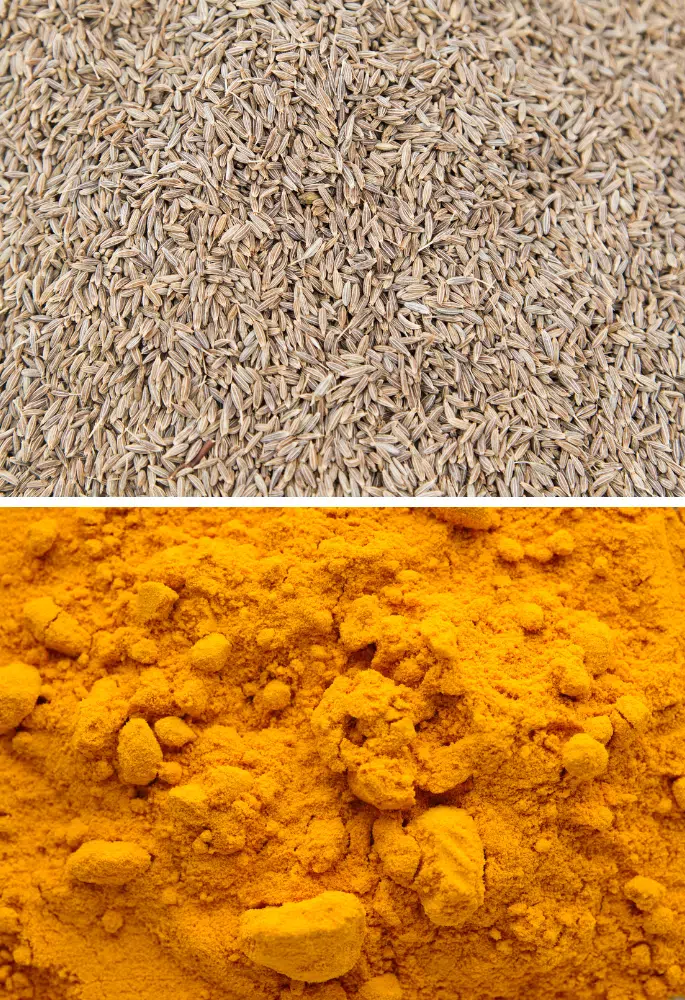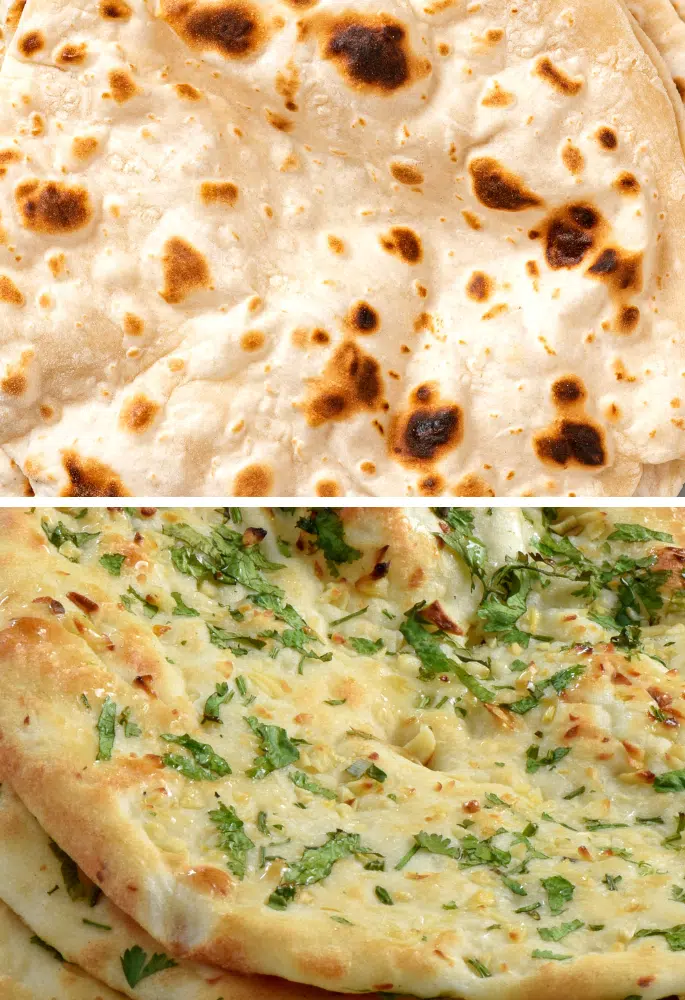Bhuna and Dhansak are two prominent dishes within Indian cuisine, each offering a unique taste experience rooted in specific regional traditions. While Bhuna is known for its richly spiced, concentrated sauce, Dhansak stands out with its combination of lentils, meat, and a distinctive sweet-sour profile, often associated with Parsi cuisine.
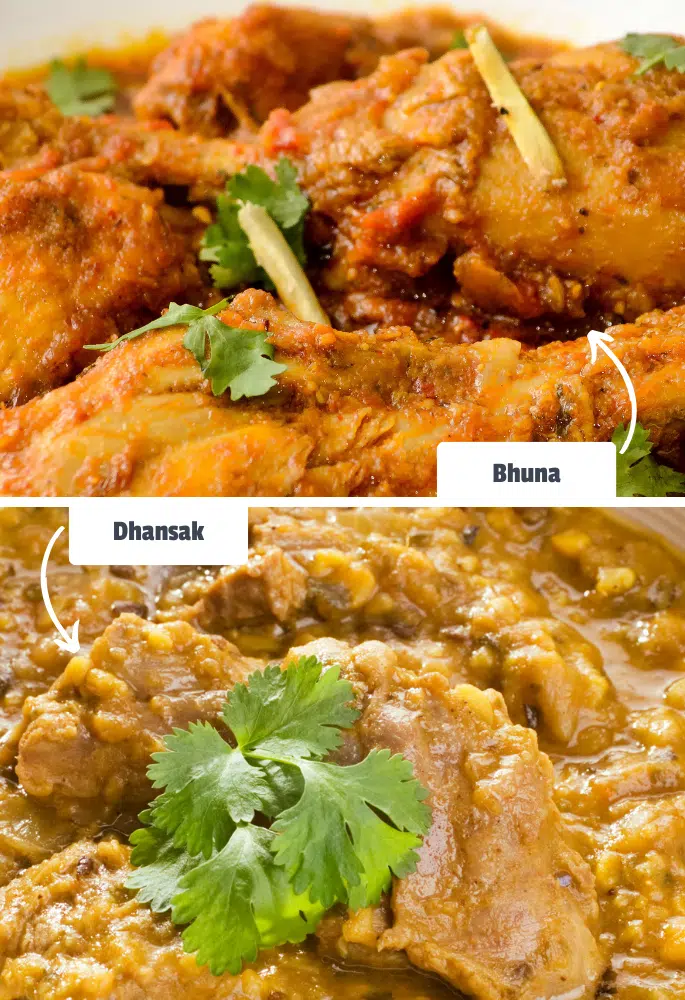
Bhuna is a technique-driven dish featuring meat cooked with spices until it forms a thick sauce, highlighting the intensity of flavours. Dhansak, on the other hand, blends lentils, meat, and a variety of spices, characterized by its sweet and sour taste, embodying the fusion of Persian and Gujarati culinary influences.
What is Bhuna?
Bhuna is a cooking process in Indian and Bangladeshi cuisine where spices are fried extensively with meat or vegetables until they form a thick, rich coating.
The term ‘bhuna’ also refers to dishes prepared using this method, known for their depth of flavour and spice.
In a bhuna dish, the cooking technique is crucial, as the ingredients are sautéed over low heat, allowing the natural juices to be absorbed and the sauce to reduce, intensifying the overall flavour without much gravy.
What is Dhansak?
Dhansak is a celebrated Parsi dish, which combines elements of Persian and Gujarati cuisine. It typically includes lentils, meat (commonly mutton or chicken), and a unique blend of spices, along with ingredients like pumpkin or aubergine, contributing to its distinctive sweet and sour profile.
The dish often incorporates a caramelized sugar component, adding to its complexity.
Dhansak is traditionally served with brown rice, which is flavored with caramelized onions, giving the meal a rich and nuanced flavor palette.
Similarities Between Bhuna and Dhansak
They might be different dishes but there are actually a number of things that make these two curries pretty similar:
- Spice Usage: Both dishes employ a complex blend of spices, integral to Indian cuisine, to develop their rich flavours.
- Adaptability: Bhuna and Dhansak can both be prepared using a variety of meats or can be adapted for vegetarian diets, demonstrating the versatility of Indian culinary practices.
- Culinary Techniques: Each dish reflects the importance of carefully balanced spices and slow cooking methods to achieve depth of flavor, showcasing the skill and tradition behind Indian cooking.
Differences Between Bhuna and Dhansak
Of course, these two are inherently difference dishes so what separates them?
- Base Ingredients: Bhuna focuses on meat or vegetables cooked with spices until a thick sauce is formed. In contrast, Dhansak incorporates lentils as a fundamental ingredient, creating a more stew-like consistency.
- Flavor Profile: Bhuna is known for its deep, concentrated savory flavors, achieved through the reduction of the sauce. Dhansak offers a sweet and sour taste, achieved by balancing spices with ingredients like sugar and tamarind.
- Cultural Origins: Bhuna is broadly associated with Indian and Bangladeshi cuisines, reflecting the cooking styles of these regions. Dhansak, however, has specific roots in Parsi cuisine, representing a blend of Persian and Indian culinary traditions.
- Accompaniments: While Bhuna is typically served with flatbreads to scoop up the thick sauce, Dhansak is traditionally accompanied by brown rice and, occasionally, kachumber (a type of Indian salad), providing a balanced meal.
Bhuna vs Dhansak: Which Wins?
Which would you pick if you HAD to limit yourself to just one? Vote below to let us know which of these two curries is the best to you:
Do You Prefer Bhuna or Dhansak?
Hailing from Liverpool, Oliver is an adventurous chef with a penchant for exploring diverse cuisines and novel ingredients. Ollie, combining his love for local British flavours with global influences, brings innovation and charm to home cooking.


